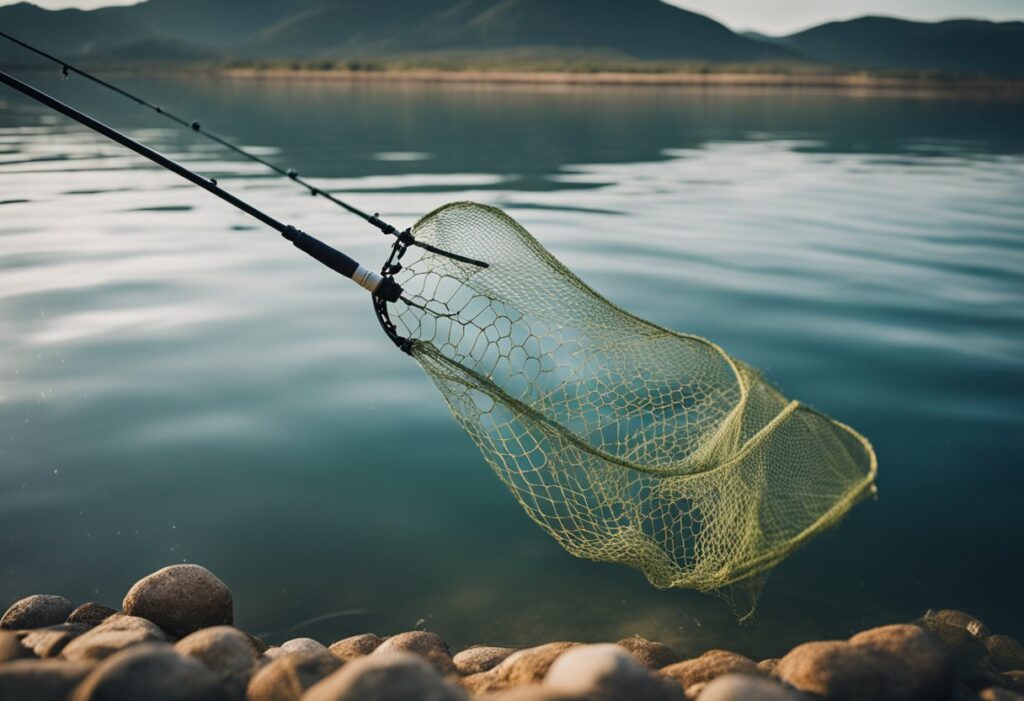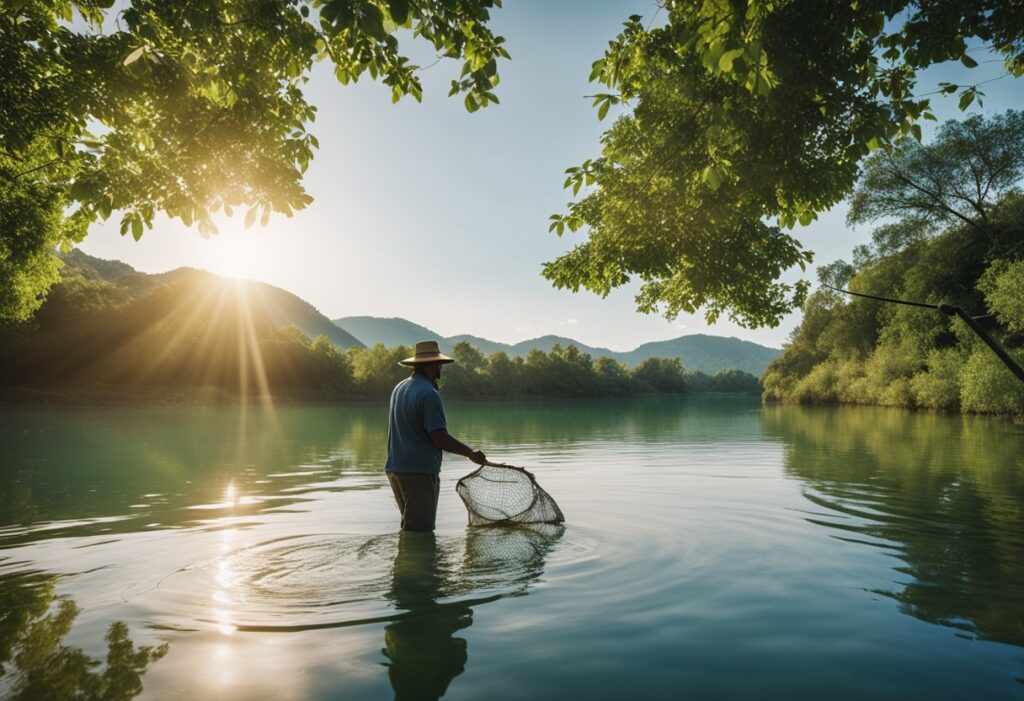What Methods Are Used to Catch Fish?
Fishing has been a vital source of food for humans for thousands of years. Over time, various methods have been developed to catch fish. These methods range from traditional techniques to modern technological advancements. Understanding the different methods used to catch fish is essential for anyone interested in fishing or the fishing industry.

Traditional fishing techniques have been used for centuries and are still used today in many parts of the world. These techniques include handline fishing, spearfishing, and cast netting. Handline fishing involves using a fishing line with a hook and bait to catch fish. Spearfishing involves diving underwater and using a spear to catch fish. Cast netting involves throwing a net over a school of fish and pulling it back to catch the fish.
Commercial fishing methods have evolved significantly over the years, with large-scale fishing operations using sophisticated equipment to catch fish. These methods include trawling, longlining, and purse seining. Trawling involves dragging a large net behind a boat to catch fish. Longlining involves deploying a long line with baited hooks to catch fish. Purse seining involves encircling a school of fish with a large net and then pulling the net tight to capture the fish.
Key Takeaways
- Fishing has been a crucial source of food for humans for thousands of years, and various methods have been developed to catch fish.
- Traditional fishing techniques include handline fishing, spearfishing, and cast netting, while commercial fishing methods include trawling, longlining, and purse seining.
- With the advancement of technology, sustainable fishing practices have been developed to protect fish populations and the environment.
Traditional Fishing Techniques

Traditional fishing techniques have been used by humans for thousands of years to catch fish for food and trade. These techniques vary widely depending on the region and culture, but some of the most common ones include hand gathering, spearfishing, netting, and angling.
Hand Gathering
Hand gathering is the simplest and oldest method of fishing. It involves wading into shallow waters and picking up fish by hand. This technique is often used to catch shellfish, crabs, and other small fish that live in the intertidal zone. Hand gathering is still widely used in many parts of the world, especially in coastal communities where fishing is a way of life.
Spearfishing
Spearfishing is another ancient fishing technique that involves using a spear to catch fish. This method requires skill and precision, as the fisherman must aim and throw the spear at the fish underwater. Spearfishing can be done from the shore, a boat, or while diving. This technique is still used today by many indigenous communities around the world.
Netting
Netting is a more advanced fishing technique that involves using a net to catch fish. This method can be done from the shore, a boat, or while diving. There are many types of fishing nets, including cast nets, seine nets, and gill nets. Each type of net is designed to catch fish in a different way. Netting is a popular fishing technique because it allows fishermen to catch large quantities of fish at once.
Angling
Angling, also known as fishing with a rod and reel, is a popular recreational and commercial fishing technique. It involves using a fishing line with a hook and bait to catch fish. Angling can be done from the shore, a boat, or while wading into the water. This method is popular because it allows fishermen to target specific fish species and can be done in both freshwater and saltwater environments.
Traditional fishing techniques are still widely used today and have been refined over thousands of years to be effective and sustainable. While modern fishing methods have become more advanced, traditional techniques continue to play an important role in many communities around the world.
Commercial Fishing Methods

Commercial fishing methods are used to catch fish in large quantities for commercial purposes. There are several methods used in commercial fishing, including trawling, longlining, seining, and gillnetting.
Trawling
Trawling is a common method used in commercial fishing to catch fish. It involves dragging a large net through the water to catch fish. The net is attached to a boat and dragged through the water at a slow speed. The net is designed to catch fish as it passes through the water. Trawling is used to catch fish such as cod, haddock, and flounder.
Longlining
Longlining is another method used in commercial fishing. It involves using a long line with baited hooks attached to it. The line is set in the water and left for a period of time. When the line is retrieved, the hooks are checked for fish. Longlining is used to catch fish such as tuna, swordfish, and halibut.
Seining
Seining is a method used in commercial fishing to catch fish in shallow waters. It involves using a large net that is dragged through the water to encircle the fish. The net is then pulled to shore, and the fish are removed from the net. Seining is used to catch fish such as salmon, sardines, and anchovies.
Gillnetting
Gillnetting is a method used in commercial fishing to catch fish. It involves using a net that is hung vertically in the water. The net is designed to catch fish by their gills as they swim through it. Gillnetting is used to catch fish such as salmon, trout, and cod.
Overall, these commercial fishing methods are used to catch fish in large quantities for commercial purposes. Each method has its advantages and disadvantages, and the choice of method depends on the type of fish being caught and the location of the fishing grounds.
Recreational Fishing Approaches

Fly Fishing
Fly fishing is a popular method of recreational fishing that involves using an artificial fly to lure fish. The fly is made to look like a natural insect or small fish, and the angler casts the fly using a specialized rod and line. This method requires a lot of skill and practice, as the angler must be able to cast the fly accurately and delicately to avoid scaring the fish away.
Spin Casting
Spin casting is a beginner-friendly method of recreational fishing that involves using a spinning reel and a lightweight lure to catch fish. The angler casts the lure using a spinning rod and reel, and retrieves it in a jerking motion to mimic the movement of a wounded fish. This method is effective for catching a variety of fish species, including bass, trout, and panfish.
Bait Casting
Bait casting is a more advanced method of recreational fishing that involves using a baitcasting reel and a heavier lure to catch larger fish. The angler casts the lure using a baitcasting rod and reel, and uses their thumb to control the speed and distance of the cast. This method requires a lot of skill and practice, as the angler must be able to cast the lure accurately and avoid backlash. Bait casting is often used for catching larger fish species, such as catfish, pike, and musky.
Recreational fishing approaches vary depending on the skill level of the angler and the type of fish they are targeting. By using the appropriate method and equipment, anglers can increase their chances of catching fish and have a more enjoyable fishing experience.
Sustainable Fishing Practices

Catch and Release
One of the most popular sustainable fishing practices is catch and release. This method involves catching fish, removing the hook, and then releasing the fish back into the water unharmed. Catch and release is often used in sport fishing and is an effective way to conserve fish populations while still allowing anglers to enjoy the sport.
Use of Fish Aggregating Devices
Fish aggregating devices (FADs) are used by commercial fishermen to attract fish in a specific area. These devices are designed to mimic natural floating objects and are often used to catch tuna and other large fish. However, the use of FADs can have negative impacts on the environment, as they can attract not only the target species but also other marine life, such as sea turtles and sharks. To mitigate this impact, some sustainable fishing practices involve the use of biodegradable FADs or limiting the use of FADs altogether.
Marine Protected Areas
Marine protected areas (MPAs) are designated areas in the ocean that are protected from fishing and other activities that may harm the environment. These areas are designed to promote the recovery of fish populations and protect marine habitats. MPAs can be effective in promoting sustainable fishing practices and protecting marine biodiversity. However, the success of MPAs depends on proper management and enforcement to ensure that fishing is not allowed in these areas.
Technological Advancements in Fishing

Electronic Fish Finders
Electronic fish finders are devices that use sonar technology to detect fish underwater. They emit sound waves that bounce off the fish and other objects in the water, and then use the echoes to create an image of the underwater environment. This technology has revolutionized the way fishermen locate fish, making it easier and more efficient to catch them.
GPS and Chartplotters
GPS and chartplotters are navigation tools that use satellite technology to pinpoint a boat’s location on a map. They allow fishermen to mark and save fishing spots, and navigate to them with ease. This technology has greatly improved the accuracy and efficiency of fishing, as fishermen can easily return to productive fishing spots.
Automated Line Fishing
Automated line fishing is a method of fishing that uses machines to bait, cast, and reel in fishing lines. This technology has greatly reduced the physical effort required for fishing, allowing fishermen to catch more fish with less physical strain. It has also increased the accuracy and consistency of fishing, as machines can perform these tasks with greater precision than human hands.
Technological advancements in fishing have greatly improved the efficiency and accuracy of fishing. From electronic fish finders to automated line fishing, these tools have made it easier for fishermen to locate and catch fish, while reducing physical strain and increasing productivity.


